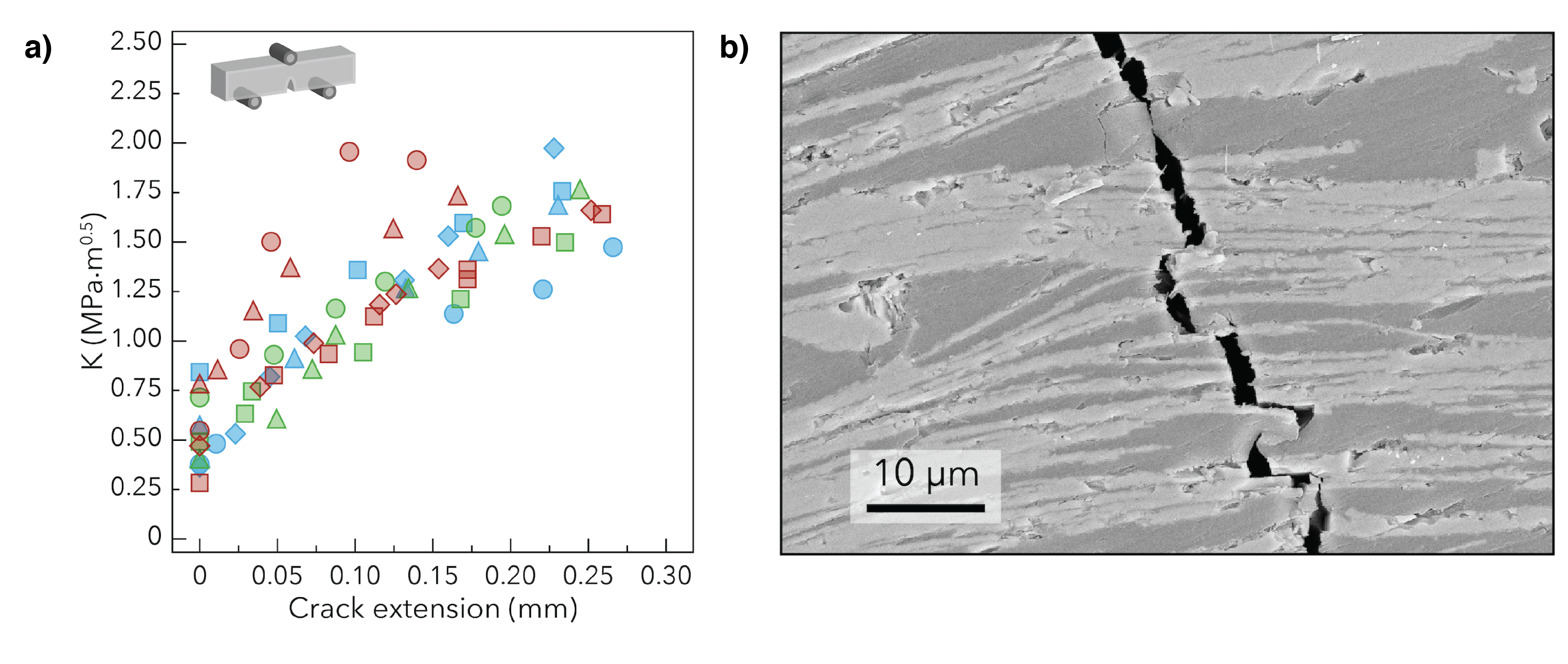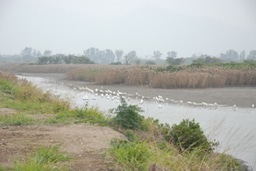Transparent and tough bulk composites inspired by nacre
Published in Electrical & Electronic Engineering

In Materials Science, fracture resistance and transparency are often mutually exclusive. Glass and glass-based materials combine high transparency and strength, but suffer from poor fracture resistance. Combining these three key structural and functional properties within the same material would offer promising ground for the development of protective transparent display covers that would not only sustain everyday mechanical loading but also maintain full structural reliability once damaged. This challenge motivated us to work on the development of this new class of materials.
We took inspiration from the nacreous layer of many seashells. Nacre is one of the few biological materials where nature has found an optimum balance between strength and toughness. The arrangement of the reinforcing tablets of calcium carbonate into a brick-and-mortar microstructure increases the fracture toughness of nacre 100-fold with respect to the pure brick material, a calcium carbonate monocrystal. The brittle calcium carbonate platelets constitute the ‘bricks’, whereas a viscous biopolymer constitutes the ‘mortar’. We developed a composite that is inspired by this effective biological design principle. In our synthetic version of nacre, large aspect ratio silica-based glass platelets were chosen as ‘bricks’ and polymethyl methacrylate (PMMA) serves as the ‘mortar’.
A simple and scalable sedimentation method followed by a low temperature heat treatment was designed to create mineral bridges between the platelets and to collectively align them into a porous and non-transparent glass scaffold (figure 1 left). We achieved optical transparency by matching the refractive indices of the glass ‘bricks’ and the PMMA ‘mortar’ (figure 1b) using an organic additive. An identical refractive index between the two materials means that light will not reflect at the interfaces between “bricks” and “mortar”. As long as no porosity is left, the composite becomes transparent. The relative improvement in optical transmission between the porous scaffold and the final composite is striking, especially when the materials are placed on top of a retro-illuminated pattern, such as a smartphone screen (figure 1).

Figure 1 | Nacre-like composite before and after infiltration. Effect of the infiltration of a refractive index matching polymer in a porous glass scaffold (left), resulting in a 2-mm thick bioinspired transparent composite (right). Picture taken from a sample placed on top of a smartphone screen (retro-illuminated).
More interestingly, the bioinspired design gives rise to both strength and fracture resistance (toughness). Indeed, the percolating network of glass platelets interconnected through strong mineral bridges leads to transparent composites with strength levels approaching the values expected for conventional glasses. At the same time, the ‘brick-and-mortar’ microstructure increases significantly the toughness and slows down crack propagation in the final composite (figure 2a). Our transparent nacre-like microstructure dissipates fracture energy due to the onset of different extrinsic toughening mechanisms, such as the deflection of cracks along a tortuous path, the bridging of cracks and the plastic deformation of the polymer used as “mortar” (figure 2b). The presence of these extrinsic toughening mechanisms is responsible for a 3-fold increase in fracture toughness with respect to commercially available glasses.

Figure 2 | Fracture properties of the transparent nacre-like composites. a, Crack growth resistance curves of the bulk nacre-like composites. b, Scanning electron micrograph highlighting the fracture path within the composite.
By engineering the microstructure of a glass composite, we have designed the first transparent platelet-reinforced composite that combines high strength with slow and stable crack propagation. This work demonstrates that bioinspired design enables the combination of antagonistic properties, such as strength, toughness and transparency, thus allowing for the creation of new classes of functional materials.
Read the full article here: https://doi.org/10.1038/s41467-019-10829-2
Follow the Topic
-
Nature Communications

An open access, multidisciplinary journal dedicated to publishing high-quality research in all areas of the biological, health, physical, chemical and Earth sciences.
Related Collections
With Collections, you can get published faster and increase your visibility.
Women's Health
Publishing Model: Hybrid
Deadline: Ongoing
Advances in neurodegenerative diseases
Publishing Model: Hybrid
Deadline: Dec 24, 2025





Please sign in or register for FREE
If you are a registered user on Research Communities by Springer Nature, please sign in